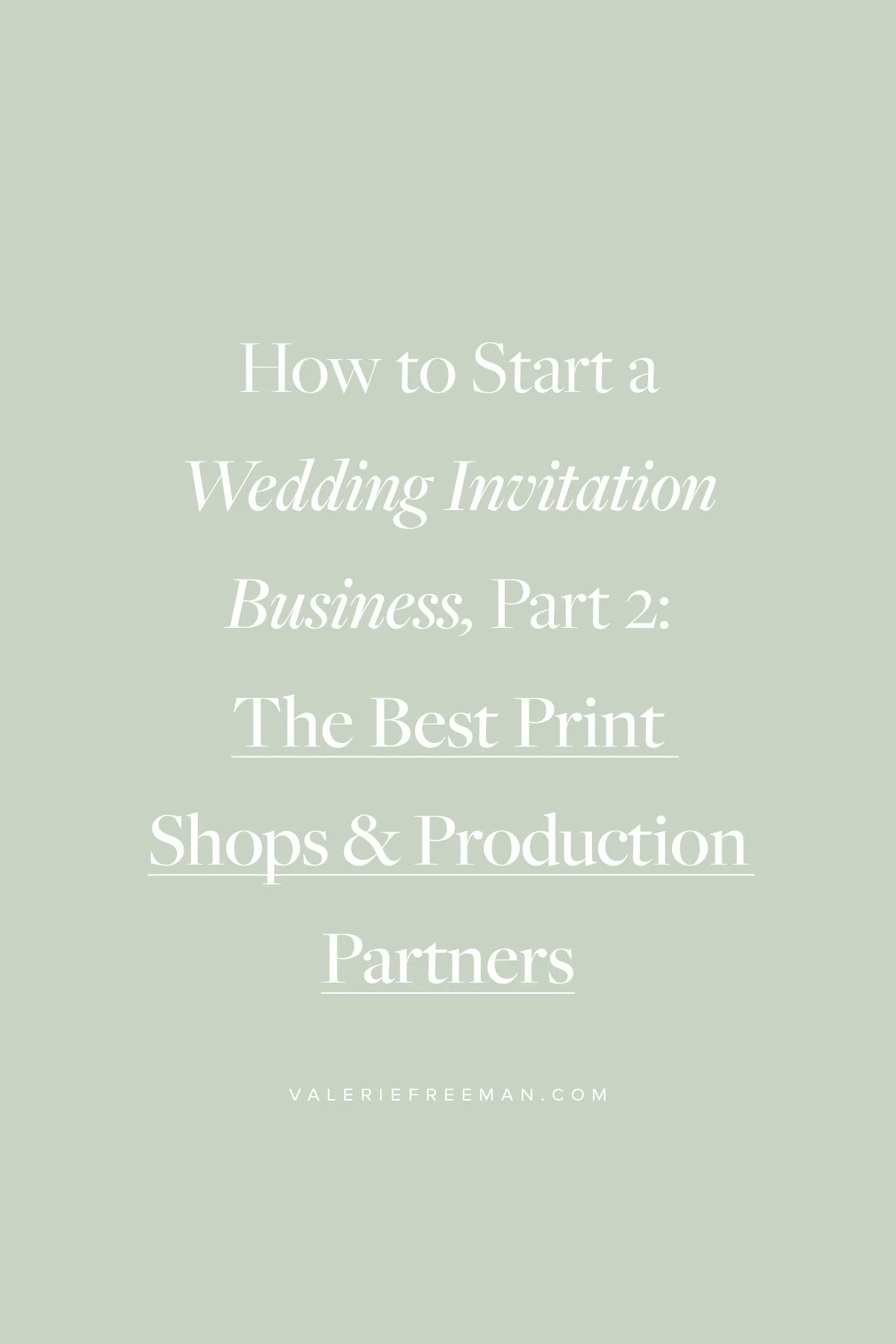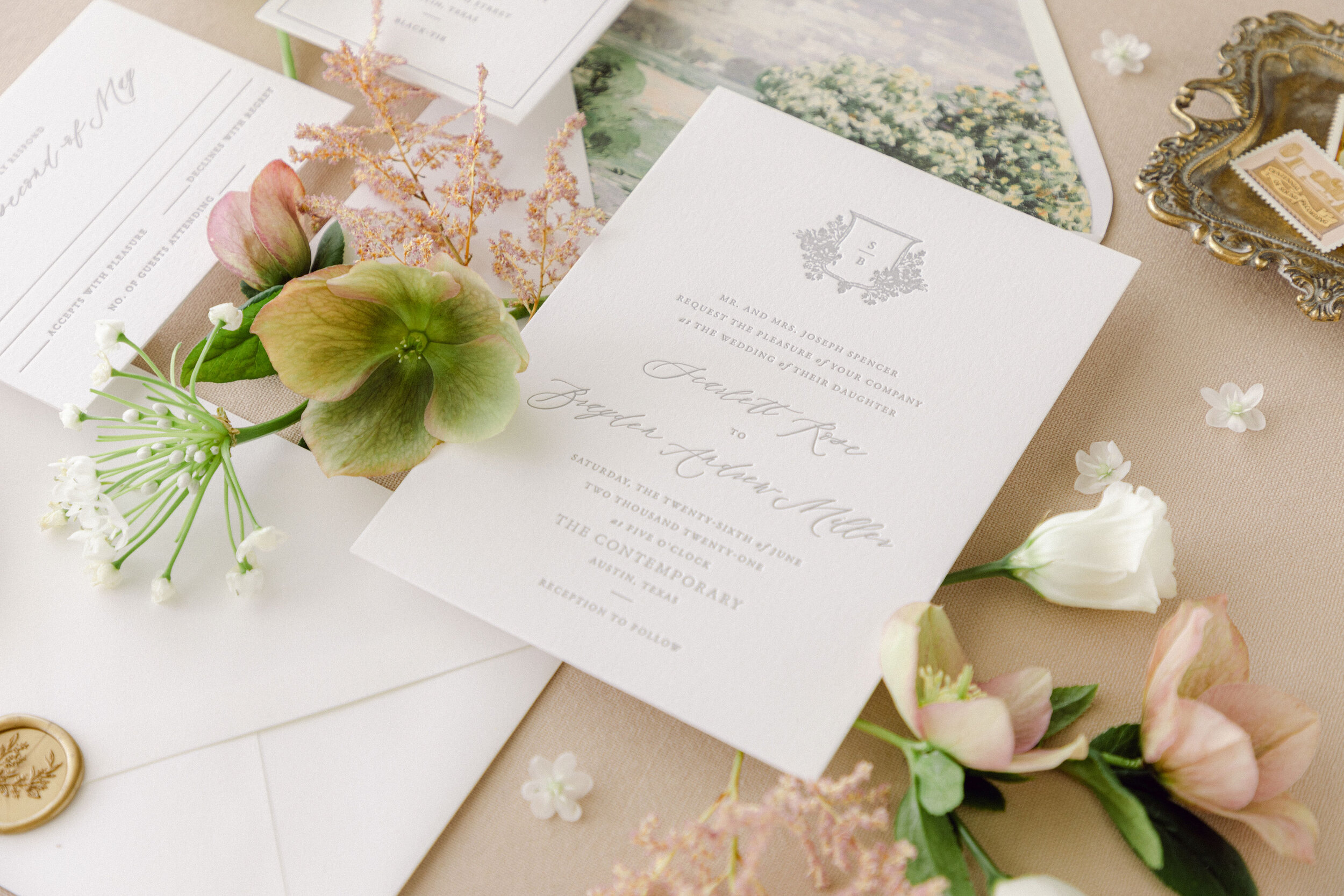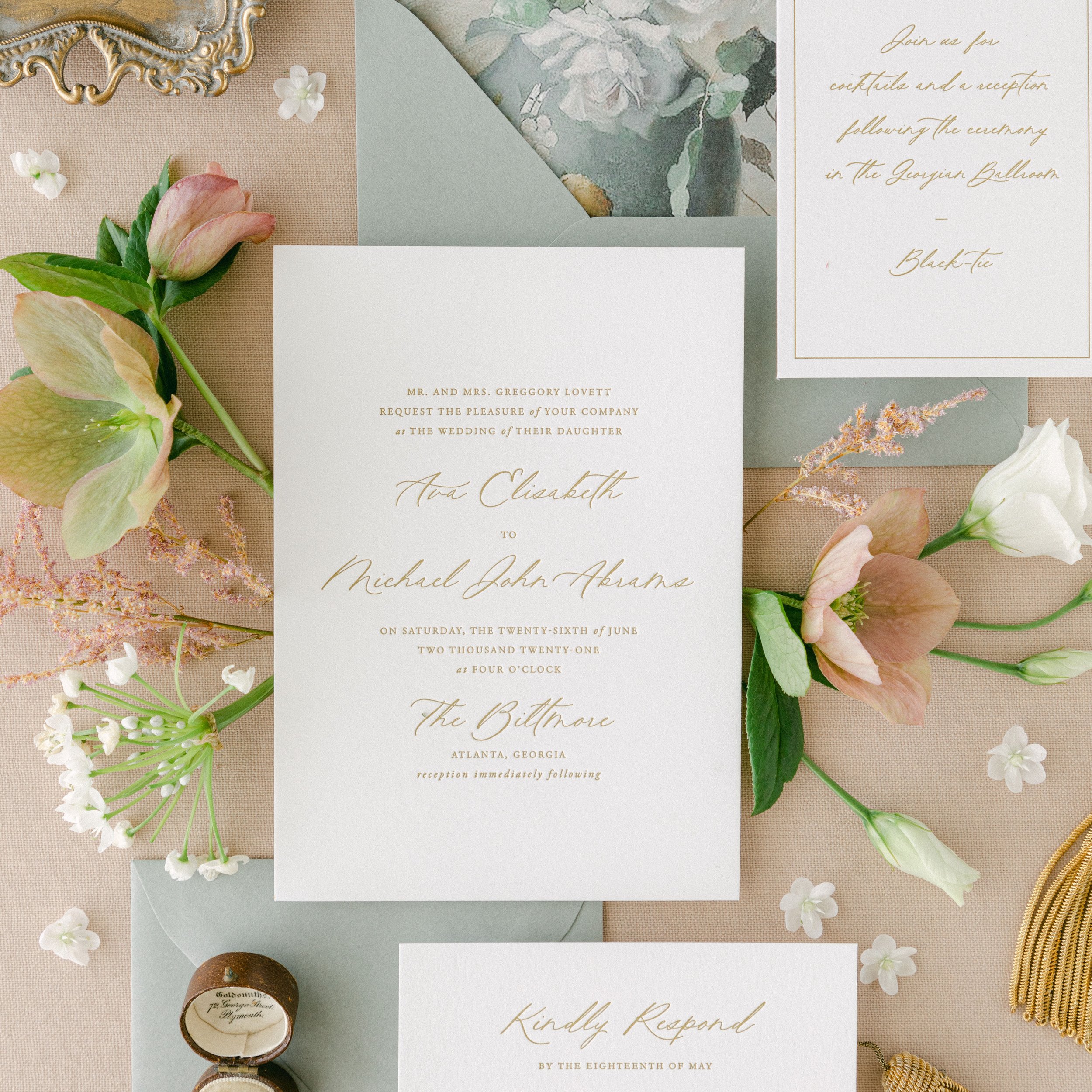How to Start a Wedding Invitation Business, Part 2: Best Printers and Production Partners
It was really hard to find good production partners when I first began. If I’m honest, it’s probably one of the biggest hurdles in starting your own wedding invitation business. You want to use high quality vendors and pretty supplies, but you aren’t sure where to find them–and it’s kind of taboo to ask other stationers about who they use.
Thankfully, there are a lot of great print shops and production partners out there to help you grow your wedding stationery business. You just have to know where to find them!
If this sounds like you, you’re in the right place. I’m a big fan of sharing this knowledge with other creative entrepreneurs, as I know first hand how hard it is to find the right vendors.
In today’s post, I’ve curated a list of my best resources for stationers, calligraphers, and creatives.
Best Printer for Wedding Invitation Business
Choosing the best printer for your wedding invitation business depends on a variety of factors. Do you want to do everything in-house or outsource? Are you mostly interested in letterpress, foil, thermography, digital printing, or all of the above? Do you prefer to use a print shop in your hometown or anywhere in the nation?
There also may not be a one-size-fits-all vendor for your business. It is important to work with the same vendors to maintain consistency and quality across your work. However, you might end up using multiple vendors for different projects. For example, I currently use one print shop for all of my digital printing and foil printing needs. But I currently use three vendors for letterpress print jobs. And sometimes, I use my local print shop for envelope printing or other projects that may need a quicker turnaround.
in-house printing
Although I outsource all of my printing and production needs, you can print stationery at home if you choose. Several stationers use the Canon Pixma Pro-200. Printing at home is best for small batch orders or if you need to have more control over printing (i.e. if you’re trying to match a specific Pantone color).
If you’re ambitious, you can even find your own vintage letterpress printer.
outsourcing
In the beginning, I personally recommend outsourcing all of your printing needs–especially if you are strapped for cash, still working a full time job, short on time, etc. Plus, by the time you pay for ink, paper, and other supplies, it might actually cost you more to print at home than to outsource. Not to mention all of the trouble shooting involved with working your own printer!
If you need a quick turnaround, go with a local printer. A quick google search for “stationery printing” or “commercial printing”can turn around several results near you. Look for a print company that has experience with invitation printing. In my area, I love using Gwin’s Commercial Printing. They produce amazing work and are perfect when I’m in a pinch. I’ve used them for envelope printing several times as well, and I’m always impressed.
For all of my other printing needs, I use print shops I’ve found from the A-Z Directory. This is by far one of the most comprehensive printing and production partners guide for stationers, calligraphers, and creatives. (In all transparency, I receive a commission for mentioning this resource if you choose to invest in it. Any compensation I earn comes at no additional cost to you. But, I only recommend resources that I personally use and believe will be beneficial for starting your business.)
Best Papers for Wedding Invitation Business
The print shop you choose will likely have a robust selection of papers. Optionally, if you decide to print at home, it’s helpful to know which types of paper are the best for wedding stationery. There are so many brands and paper weights and styles to choose from! It can be overwhelming, especially in the beginning.
Paper Weight
Always choose cover weight card stock. Text weight is too flimsy, like typing paper. Anything 110lb or 14pt or higher is ideal for wedding stationery. You may also want to use double thick card stock, which is 220lb or higher.
paper finish
There are so many different finishes for wedding papers, but there are two common types: eggshell and cotton. Eggshell paper is perfect for digital printing and at-home printing. It has a light, subtle texture to it. This is the type of paper I use for digitally printed wedding invitations and gold foil invitations. It’s also more economical than cotton paper. Cotton paper is best for letterpress printing. It’s beautiful, organic, and textured.
Optionally, there is pearl paper. This type of paper has a metallic shimmer to it, kind of like glitter. It was very popular about ten years ago, but is sometimes still used today.
handmade paper
Handmade paper is incredibly popular right now. This pricey paper is incredibly textured and has raw, unfinished edges. It’s ideal for luxury and works best with letterpress or foil printing. This style is difficult to print on, so I recommend using a professional print shop that has experience with it. Idyll Paper is a really great resource and print shop for handmade wedding invitations.
Other Suppliers
When it’s time to add luxurious little extras to your stationery, these are some of my favorite resources.
Luxurious, handmade ribbon with unfinished edges from Tono & Co.
Handmade silk ribbon from MayArts
Vintage Postage: There are multiple shops on Etsy who sell vintage postage. One of my favorites is Enfield Post.
Wax Seals from Artisaire
I get most of my packaging supplies from Uline
One last thing…
I hope you’re enjoying my latest series, How to Start a Wedding Invitation Business, and gaining valuable insight for your venture.












